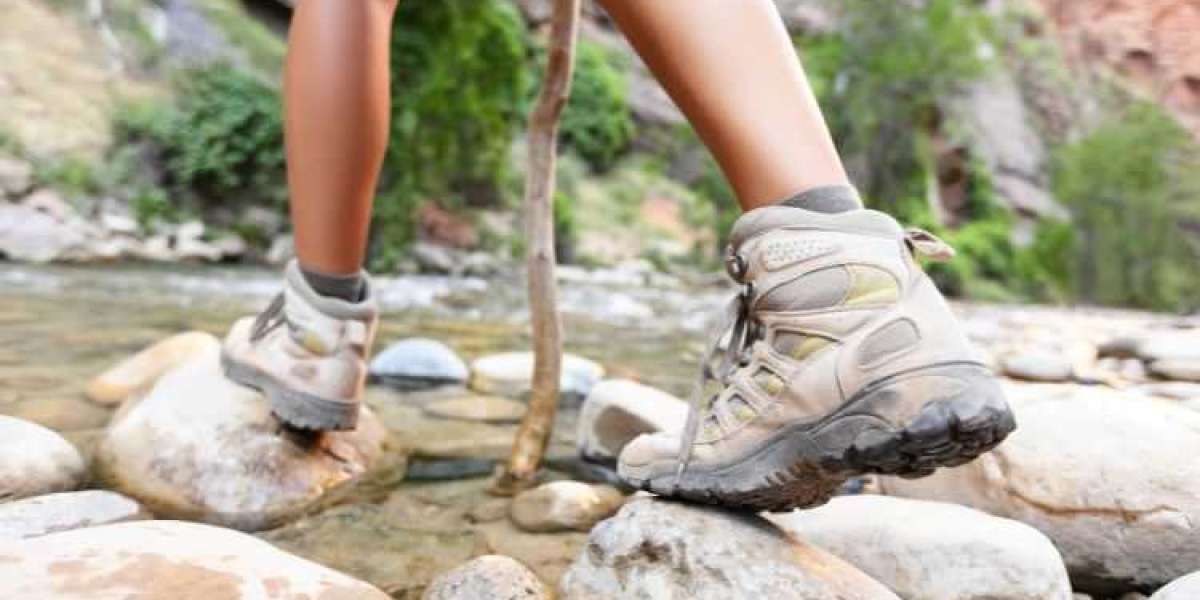The global Hiking Footwear Market Size has witnessed robust growth in recent years, reaching a market value of approximately USD 19.95 billion in 2023. Fueled by a growing interest in outdoor activities, health and wellness trends, and an increase in disposable income, the market is projected to grow at a CAGR of 3.40% from 2024 to 2032, reaching a value of USD 26.94 billion by 2032. This growth is driven by various factors, including innovation in footwear technology, increased consumer demand for durable and comfortable hiking shoes, and expanding hiking trails and adventure tourism worldwide.
Key Benefits of Hiking Footwear
Hiking footwear is designed to offer several critical benefits for outdoor enthusiasts. These include:
- Durability: Built to withstand rugged terrains, hiking footwear features durable materials such as leather and synthetic fabrics that protect against wear and tear.
- Comfort and Support: Advanced cushioning systems, arch support, and ergonomic designs make hiking footwear comfortable for long hikes, reducing strain on the feet, ankles, and legs.
- Water Resistance: Many hiking shoes are equipped with waterproof membranes, ensuring dry feet in wet conditions, such as rain or stream crossings.
- Traction: Specialized soles with enhanced grip ensure stability on uneven, rocky, or slippery surfaces, reducing the risk of slips and falls.
- Breathability: Modern hiking footwear designs integrate breathable materials that help regulate temperature and prevent sweat build-up, improving overall comfort.
These benefits make hiking footwear an essential gear for both seasoned hikers and casual outdoor enthusiasts, further boosting the market demand.
Key Industry Developments
Recent years have seen significant developments in the hiking footwear market, with manufacturers focusing on sustainability, technological advancements, and collaborations to enhance product offerings. Some of the notable industry developments include:
- Sustainable Footwear: Leading brands like Merrell and Timberland have introduced eco-friendly hiking boots, incorporating recycled materials and minimizing carbon footprints. This caters to environmentally conscious consumers and aligns with global sustainability trends.
- Innovations in Sole Technology: Brands are investing in research to develop lightweight yet durable soles, such as Vibram’s Megagrip technology, which provides improved grip on wet and dry surfaces. Such innovations contribute to the superior performance of hiking footwear.
- Collaboration with Outdoor Enthusiasts: Companies are collaborating with professional hikers and outdoor influencers to design performance-enhanced shoes tailored to the specific needs of different terrains and climates.
- Smart Footwear Integration: Some brands are exploring the integration of smart technology in hiking footwear, including tracking features like GPS and health monitoring sensors.
These developments reflect the dynamic nature of the market, with companies striving to meet the evolving needs of modern consumers.
Driving Factors
Several key drivers are propelling the growth of the hiking footwear market:
- Rise in Outdoor Recreation and Adventure Tourism: The increasing popularity of hiking, camping, and nature exploration activities has significantly boosted demand for hiking footwear. Adventure tourism has become a major trend, with consumers looking for gear that enhances their experience.
- Health and Fitness Awareness: The global focus on health and wellness has encouraged more people to participate in physical activities like hiking, contributing to the demand for high-quality hiking shoes that offer comfort and support.
- Technological Innovations in Footwear: The development of innovative materials and designs, such as lightweight and waterproof options, has attracted a broader audience. Consumers are seeking footwear that not only performs well but also provides comfort in various conditions.
- Increased Disposable Income: Growing disposable income, especially in emerging economies, allows consumers to invest in high-quality, durable hiking footwear, further driving market growth.
COVID-19 Impact
The COVID-19 pandemic had a mixed impact on the hiking footwear market. On the one hand, disruptions in manufacturing, supply chain issues, and temporary store closures affected product availability. On the other hand, the pandemic also spurred an increased interest in outdoor activities, including hiking, as people sought safe and socially distanced recreational options. As a result, there was a surge in demand for hiking gear post-pandemic, particularly through e-commerce channels, leading to a recovery in market growth.
Restraining Factors
Despite its growth potential, the hiking footwear market faces certain challenges:
- High Cost of Premium Footwear: The cost of high-quality hiking shoes can be prohibitive for some consumers, particularly in developing markets. This limits market penetration in price-sensitive regions.
- Competition from Low-Cost Alternatives: The availability of cheaper, low-quality alternatives can deter consumers from investing in more durable and high-performance hiking footwear, affecting premium brands' market share.
- Seasonal Nature of the Market: Hiking footwear sales are often seasonal, with demand peaking during certain times of the year, such as spring and summer. This seasonality can impact consistent revenue generation for manufacturers.
Market Segmentation
The hiking footwear market can be segmented based on product type, distribution channel, and geography.
- By Product Type: The market includes hiking boots, hiking shoes, trail running shoes, and sandals. Hiking boots dominate the market due to their durability and protection, but hiking shoes are gaining popularity for lighter trails and casual hiking.
- By Distribution Channel: The market is divided into online and offline sales channels. E-commerce platforms have seen tremendous growth, especially in the wake of the pandemic, while specialty stores and outdoor retailers remain important for in-person purchases.
- By End-User: The market can be segmented into men, women, and children, with men's footwear accounting for the largest share. However, the demand for women's and children's hiking shoes is growing due to increased outdoor activity participation across all age groups.
Regional Analysis/Insights
The hiking footwear market is geographically diverse, with North America, Europe, and Asia-Pacific as the key regions.
- North America: The region holds the largest share, driven by the presence of well-established outdoor activities and the popularity of adventure tourism in countries like the U.S. and Canada. High disposable income and consumer preference for quality outdoor gear also contribute to the region's dominance.
- Europe: The European market is bolstered by a strong hiking culture, particularly in countries like Switzerland, Germany, and the UK. Sustainable footwear and eco-conscious products are gaining traction in the region.
- Asia-Pacific: This region is experiencing the fastest growth due to rising disposable income, growing interest in outdoor activities, and expanding tourism sectors in countries like China, India, and Japan.
- Rest of the World: Latin America and the Middle East are emerging markets for hiking footwear, driven by growing adventure tourism and consumer interest in outdoor sports.
Trends and Opportunities
- Sustainability: As environmental concerns continue to rise, there is a growing demand for eco-friendly hiking footwear. Brands that focus on sustainability, such as using recycled materials and reducing emissions in production, are likely to attract a more conscious consumer base.
- Customization: There is an increasing demand for customized hiking footwear that caters to specific foot shapes, preferences, and hiking conditions. Companies that offer customization options could gain a competitive edge.
- E-commerce Growth: With the rise of online shopping, e-commerce presents a significant opportunity for hiking footwear brands to expand their reach, particularly in emerging markets.
Challenges
- Supply Chain Disruptions: Ongoing global supply chain disruptions, exacerbated by the COVID-19 pandemic, have led to delays in production and shipping, affecting the availability of products in various markets.
- Price Sensitivity in Emerging Markets: In regions with lower disposable incomes, price sensitivity remains a challenge, limiting the penetration of premium hiking footwear brands.
Key Players in the Hiking Footwear Market
The hiking footwear market is highly competitive, with several major players driving innovation and expanding their product offerings. Key players include:
- Mizuno Corporation
- New Balance, Inc.
- Amer Sports Corporation
- PUMA SE
- Wolverine World Wide, Inc.
- NIKE, Inc.
- Others



